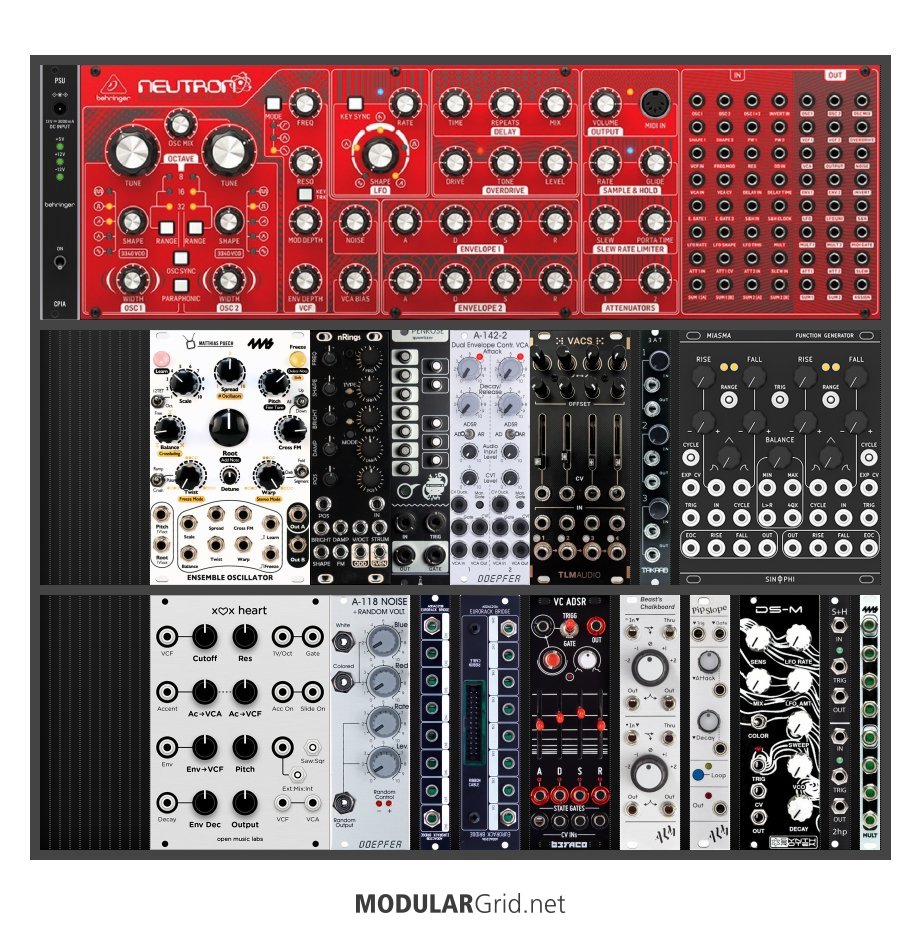Hi all,
I have had quite a few issues with combining triggers from multiple clock sources. I had a lot of unwanted behavior for example by using a trigger Pamela's New Workout as a clock source and a trigger from Abstract Data's Octocontroller as a reset signal. The reset almost never "resets" a sequence since the reset trigger is always a few milliseconds before or after the clock trigger.
The cause seems to me is that some clock modules have a little more processing time than others. Makes sense.
Most of the time I try to avoid this problem by using clock and reset input from exactly the same source. However I tried to use a logic module combined with the third channel of Mutable Instruments' Grids (hat channel) and Pamela's New Workout (which directly clocks MI Grids).
Pams sends an offbeat trigger of a 1x pulse, 1% width and 50% phase, classic open hi-hat pattern. I want the hat pattern coming from grids as the closed hi-hat, but also the closed hat needs to choke (i.e. not be triggered) when the open hat is triggered.
So there are a lot of ways to do this, but my first thought would be: both hi-hat offset trigger and Grids' hat channel into logic module, set mode to exclusive or (XOR). This should only put out a trigger when only the open hi-hat is playing and Grids is not, or when only Grids if playing and the open hi-hat not. But since the triggers are not from the same source, there is still a trigger when both inputs are high but with a weird ratcheting effect.
I tried to change the width and phase of the output of Pams, but this even makes it weirder. The same when I use a trigger delay or function generator between Grids' output and the logic module to delay the trigger.
Its very difficult as well to see how far the two triggers are apart, since it's just milliseconds of difference.
How do you guys handle this issues?



